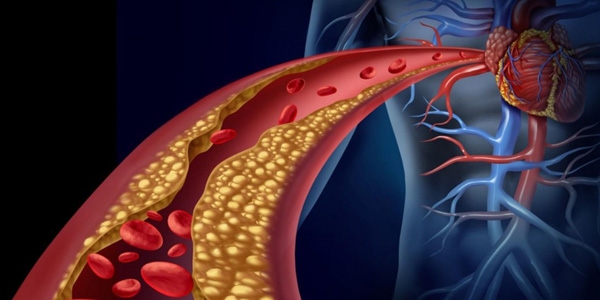Também no oriente a dislipidemia aterogénica aumenta os eventos cardiovasculares nos diabéticos com LDL controlada
publicado em Notícias
13/11/2018
Um trabalho agora publicado no Diabetes Obes Metab. 2018 Sep 17. doi: 10.1111/dom.13537, mostra que apesar dos níveis de LDL-C controlados com estatina, os eventos CV foram maiores nos doentes com diabetes mellitus tipo 2 e níveis mais altos de triglicéridos. Porque estavam controlados os outros fatores de risco cardiometabólicos é provável que a diferença nos níveis de triglicéridos contribua para o excesso de risco observado doentes com níveis mais altos triglicéridos.
Increased residual cardiovascular risk in patients with diabetes and high versus normal triglycerides despite statin-controlled LDL cholesterol.
Nichols GA(1), Philip S(2), Reynolds K(3), Granowitz CB(2), Fazio S(4).
AIM: To determine whether high triglycerides (TG) in the presence of statin-controlled LDL-C influence the risk of cardiovascular disease (CVD) among patients with diabetes in real-world clinical practice.
MATERIALS AND METHODS: We identified adults with diabetes from the Southern California and Pacific Northwest regions of Kaiser Permanente. We included patients undergoing statin therapy with LDL-C from 40-100 mg/dL who were not undergoing other lipid-lowering therapies and had a prior diagnosis of atherosclerotic CVD or at least one other CVD risk factor. We grouped patients into high TG (200-499 mg/dL; n = 5542) or normal TG (<15 mg/dL, n = 22 411) from January 2010 through December 2016 to compare incidence rates and rate ratios of first non-fatal myocardial infarction (MI), non-fatal stroke, unstable angina and coronary revascularization. We adjusted multivariable analyses for age, sex, race/ethnicity, smoking status, blood pressure, HbA1c, serum creatinine, presence of ischaemic heart disease and study site.
RESULTS: Adjusted rate ratios for the four outcomes were all statistically significantly different. The incidence rate for non-fatal MI was 30% higher in the high TG group (rate ratio, 1.30; 95% CI, 1.08-1.58; P = 0.006). The rate was 23% higher for non-fatal stroke (1.23, 1.01-1.49, P = 0.037), 21% higher for coronary revascularization (rate ratio, 1.21; 95% CI, 1.02-1.43; P = 0.027) and was, non-significantly, 33% higher for unstable angina (rate ratio, 1.33; 95% CI, 0.87-2.03; P = 0.185).
CONCLUSIONS: Despite statin-controlled LDL-C levels, CV events were greater among patients with diabetes and high TG levels. Because we controlled for cardiometabolic risk factors, it is likely that the difference in TG levels contributed to the excess risk observed in patients with high TGs.
